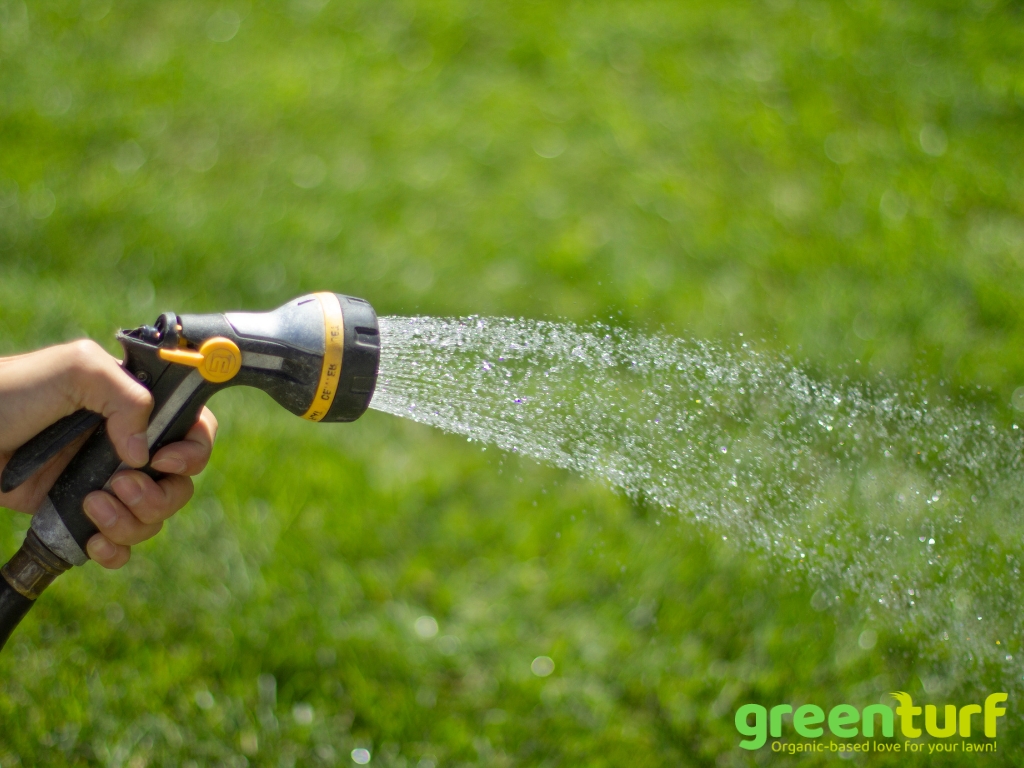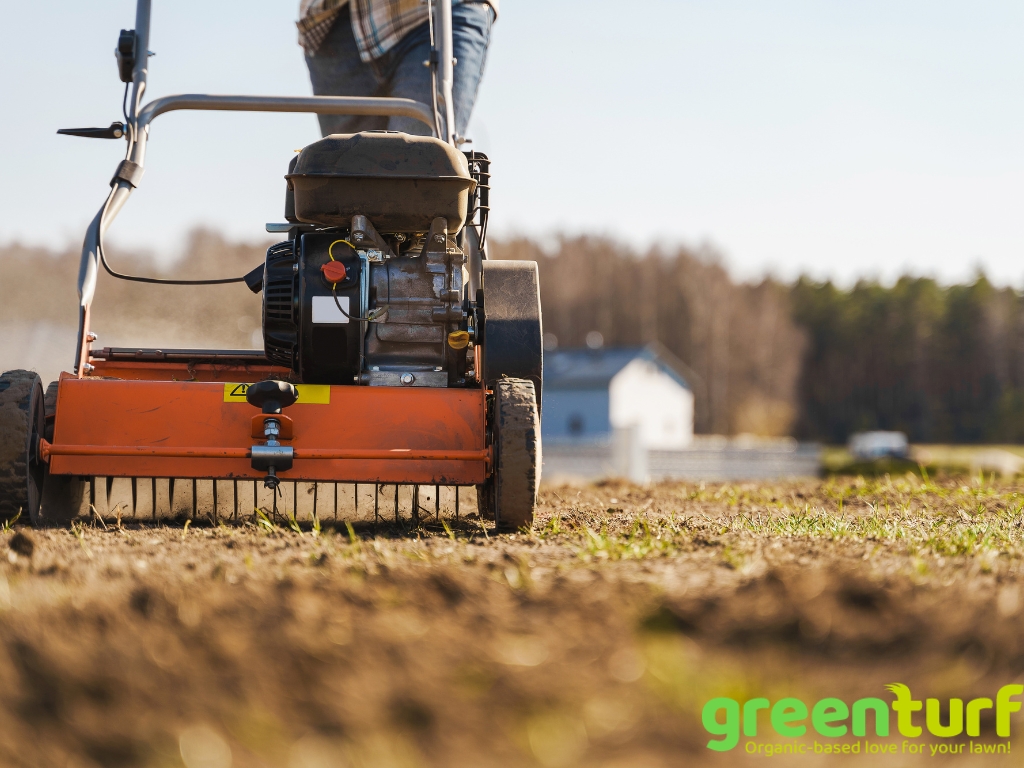Watering a lawn might seem like a straightforward task, but using the right techniques is crucial for maintaining a vibrant and healthy green carpet outside your home.
Proper watering not only promotes deep root growth but also helps prevent diseases, conserves water, and ensures an even distribution of moisture. Recognizing the significance of this task, this guide offers invaluable lawn watering tips and methods for optimal water application.
While many homeowners simply rely on rainfall or an occasional sprinkle with a hose to water their lawn, this often isn’t sufficient for achieving the lush, green lawns most people desire. By understanding the best times and methods to water grass, one can not only achieve a stunning yard but also promote environmental conservation and efficient use of resources.
Understanding Your Lawn’s Needs
Every lawn is unique, with specific needs determined by the grass species, the soil’s composition, and the local climate. To nurture a lawn properly, it’s crucial to grasp these distinctions and tailor your watering practices accordingly. A deeper understanding of these variables ensures that the grass receives just the right amount of water it requires, keeping the soil consistently moist.
- Grass Type
Grass species, including cool season grasses and warm season grasses, can vary significantly in their water requirements. Recognizing the specific type of grass in the lawn is paramount.
While some grass varieties, like certain native and warm season grasses, might be drought-resistant and can thrive with minimal water, others like Kentucky bluegrass, a popular cool season grass, require regular and consistent moisture to maintain their lush appearance.
- Soil Composition
The soil type plays a pivotal role in water retention and drainage. Sandy soils, due to their coarse texture, tend to drain water quickly, meaning they might need more frequent watering to keep the soil moist.
On the other hand, clay soils have fine particles that retain water for extended periods, often reducing the need for frequent watering.
- Local Climate
The climate impacts the frequency and amount of water your lawn requires. In areas characterized by high temperatures or sparse rainfall, lawns might demand more frequent watering to combat the evaporation rate and maintain moisture.
Conversely, in cooler regions with abundant rainfall, overwatering can become a concern, and it’s essential to modulate the watering frequency accordingly.
By taking into account the type of grass, the soil’s nature, and the prevailing local climate, one can design a more effective watering routine. It’s a delicate balance to strike, but with the right lawn watering tips, any lawn can flourish and radiate health.
The Best Time to Water Lawn
Watering a lawn isn’t just about the amount of water used but also the timing. The time of day when you water your lawn can greatly influence the effectiveness of the watering and the overall health of the grass. Thus, understanding the best times to water grass can make a significant difference.
- Less Evaporation
The sun’s intensity directly affects the rate at which water evaporates from the ground. By watering during the cooler parts of the day, such as early morning or late evening, the water has a better chance to soak into the soil without quickly evaporating. This ensures that the grass roots receive ample moisture and can nourish the grass adequately, keeping the soil consistently moist.
- Avoiding Disease
A damp and warm environment is a breeding ground for many fungal diseases that can harm grass seeds and established lawns. By watering in the late evening or early morning, the lawn gets adequate time to dry up before the temperature drops at night. This minimizes the risk of fungal infections, ensuring a greener lawn.
- Consistency
Just like humans, grass too benefits from a consistent routine. When you water your lawn at the same time consistently, preferably in the morning, the grass gets acclimatized to this pattern. This regularity helps in better moisture absorption and promotes consistent growth across the lawn.
Choosing the best time to water lawn is a blend of science and routine. By considering evaporation rates, potential disease risks, and the benefits of consistency, one can optimize watering practices to ensure a lush, green, and healthy lawn.
Efficient Watering Techniques
Watering a lawn goes beyond simply turning on a hose or sprinkler. With the right techniques, one can ensure the effective utilization of water, providing the lawn with the moisture it needs while also conserving this precious resource. Adopting efficient lawn watering tips not only benefits the lawn but also contributes to a sustainable and responsible gardening approach.
- Deep Watering
Shallow watering often only moistens the surface, leading to shallow root growth. In contrast, deep watering involves thoroughly soaking the soil, allowing water to reach deeper into the ground. This technique encourages the grass’s roots to grow deeper, enhancing its resilience against drought and other stresses.
- Pulse Watering
Sloped landscapes or areas with quick-draining soils can present challenges. Pulse watering addresses this by applying water in short bursts multiple times. This method allows the soil to absorb the water between each pulse, preventing wastage through runoff.
- Use Efficient Sprinklers
The right sprinkler system can make all the difference. Opt for sprinklers that offer uniform coverage across the lawn, eliminating dry patches. Additionally, adjustable sprinklers can be tailored to the lawn’s specific needs, ensuring that water isn’t wasted on sidewalks or driveways.
- Manual Watering for Problem Areas
Some areas of the lawn may need special attention, and manual watering can address these specific needs. Whether it’s a particularly dry patch or a newly sown area with fresh grass seeds, using a watering can or hose directly can ensure that these spots receive the moisture they need without overwatering the rest of the lawn.
- Watering Duration and Frequency
It’s not just about the amount, but also how often. Rather than watering lightly every day, it might be more beneficial to water deeply a few times a week, allowing the soil to dry slightly between sessions. This not only conserves water but also strengthens the grass by encouraging deeper root growth.
Efficient watering techniques are the cornerstone of sustainable lawn care. By understanding the nuances of each method, from deep watering to selecting the right sprinkler system, homeowners can cultivate a thriving lawn that’s both environmentally friendly and aesthetically pleasing. Making informed choices ensures that every drop counts.
Signs of Over-Watering and Under-Watering
A well-watered lawn is the backbone of a thriving garden, but finding the right balance can be tricky. Both over-watering and under-watering have distinct symptoms that, when recognized early, can prevent potential damage. By understanding these signs and adapting the watering regimen, one can ensure the lawn remains in optimal condition.
- Over-Watering Signs
An over-hydrated lawn will often manifest symptoms that are hard to ignore. The grass may change color, turning a lighter shade of green or even yellowish. Additionally, the growth of algae or mold is a red flag, indicating excess moisture. Another tactile sign is if the lawn feels spongy or overly soft underfoot.
- Under-Watering Signs
A thirsty lawn will also showcase clear signs of distress. One of the most noticeable is when the individual grass blades begin to fold inwards. A shift in the lawn’s hue to a bluish-gray tone is another indication. Furthermore, if footprints or impressions remain visible on the grass for an extended period, it’s a sign that the lawn is not receiving adequate moisture.
- Adapting
Recognizing the signs is the first step; the next is taking corrective action. Adjustments to the watering schedule should be made promptly to address the identified issues. While making these changes, it remains imperative to keep in mind the best time to water lawn, ensuring maximum effectiveness.
Understanding the signs of over-watering and under-watering is essential for maintaining a healthy lawn. By staying vigilant, recognizing the symptoms early on, and adapting the watering approach as needed, one can achieve a resilient and lush landscape.
Automating with Technology
In an era driven by technology, even the realm of gardening has seen innovations that make lawn care more efficient and hassle-free. Leveraging these advancements can significantly simplify the watering process, ensuring that the lawn receives the right amount of water at the right time, every time.
- Smart Sprinklers
A leap from traditional systems, smart sprinklers are designed to think for themselves. They assess local weather conditions, like impending rainfall or high evaporation rates, and adjust their watering schedules autonomously. This ensures that the lawn gets optimal moisture without any unnecessary wastage or human intervention.
- Moisture Sensors
These are the eyes beneath the soil. By measuring the soil’s moisture levels in real-time, these sensors can provide invaluable data. When the soil becomes too dry, they send out notifications, eliminating any guesswork and ensuring that the lawn is watered precisely when needed.
- Drip Irrigation
This method is particularly advantageous for garden spaces with plants requiring direct root watering. Drip irrigation systems release water slowly and directly to the plant’s roots, minimizing surface evaporation. This ensures that plants receive a steady and efficient supply of moisture, promoting healthier growth.
The integration of technology in lawn care offers a harmonious blend of nature and innovation. By adopting smart systems like moisture sensors and automated sprinklers, the task of watering becomes more precise and effortless. Embracing these technologies ensures that the garden remains verdant and vibrant while also being resource-efficient.
The Bottom Line
Achieving a healthy, green lawn requires more than just routine watering. By understanding the unique needs of the grass, choosing the best time to water lawn, employing efficient techniques, recognizing signs of improper watering, and leveraging technology, homeowners can ensure their lawns remain vibrant and robust. This guide serves as a comprehensive resource for anyone looking to master the art of lawn watering.
Whether you’re dreaming of a vibrant backyard haven or a pristine front lawn, GreenTurf provides the expert solutions and products to turn those dreams into reality. Don’t settle for mediocrity when your lawn can be a masterpiece.




